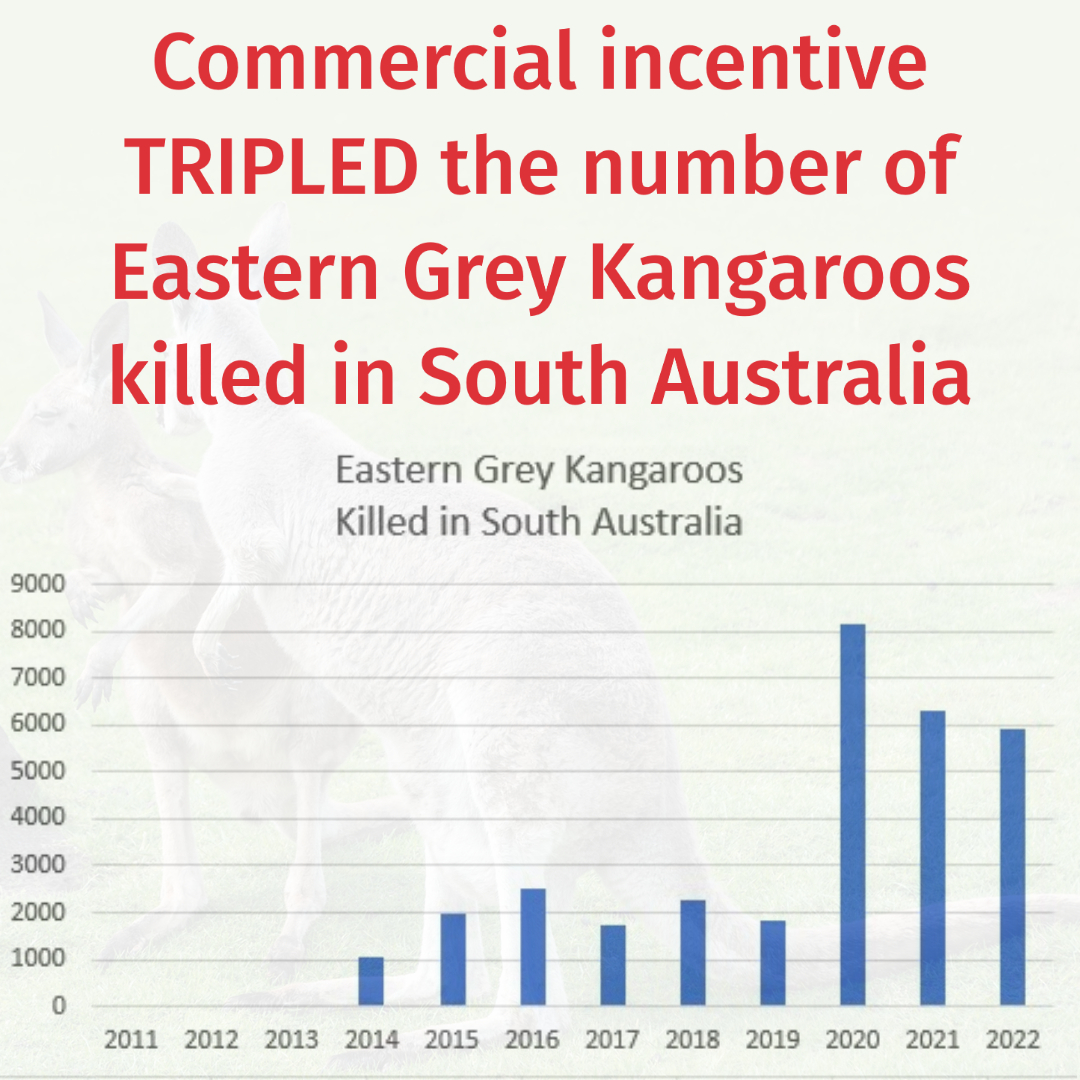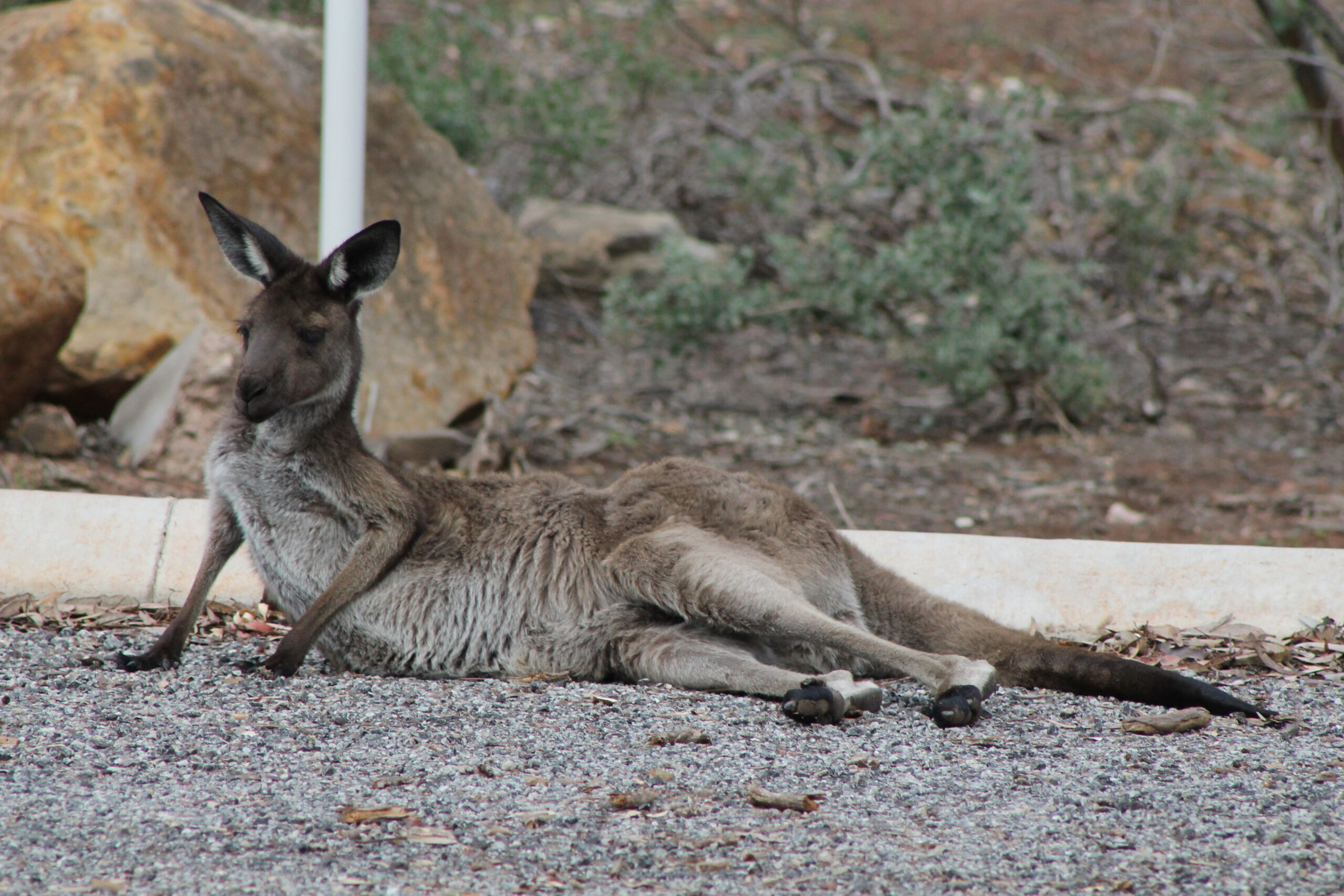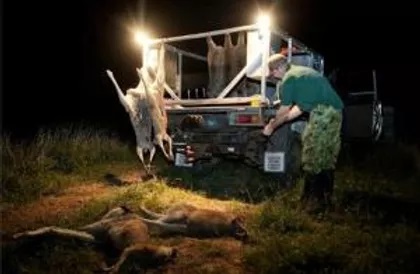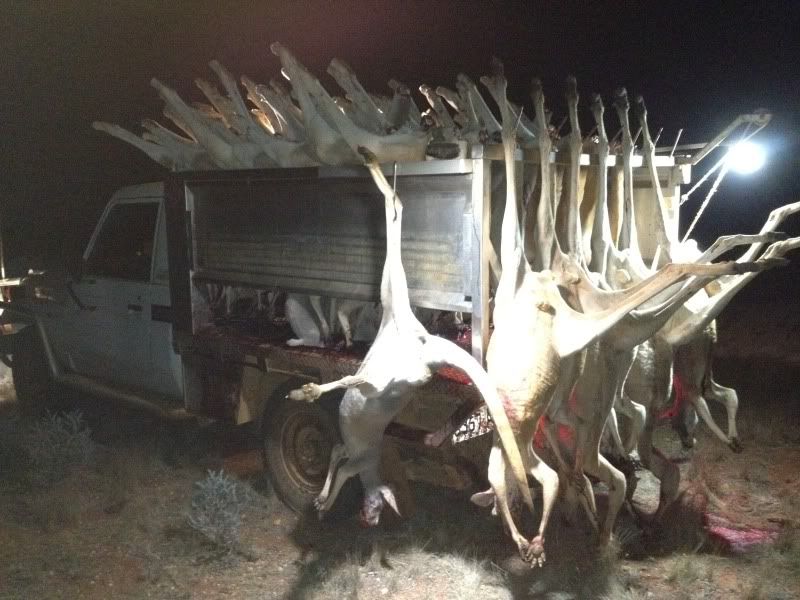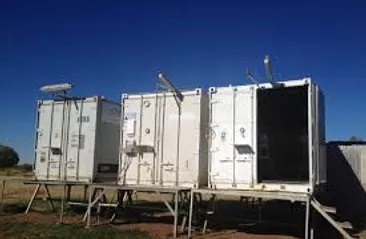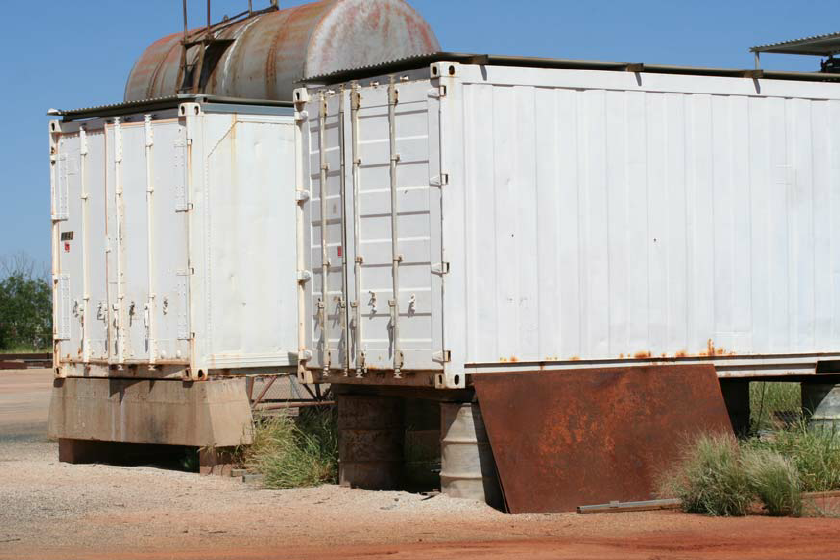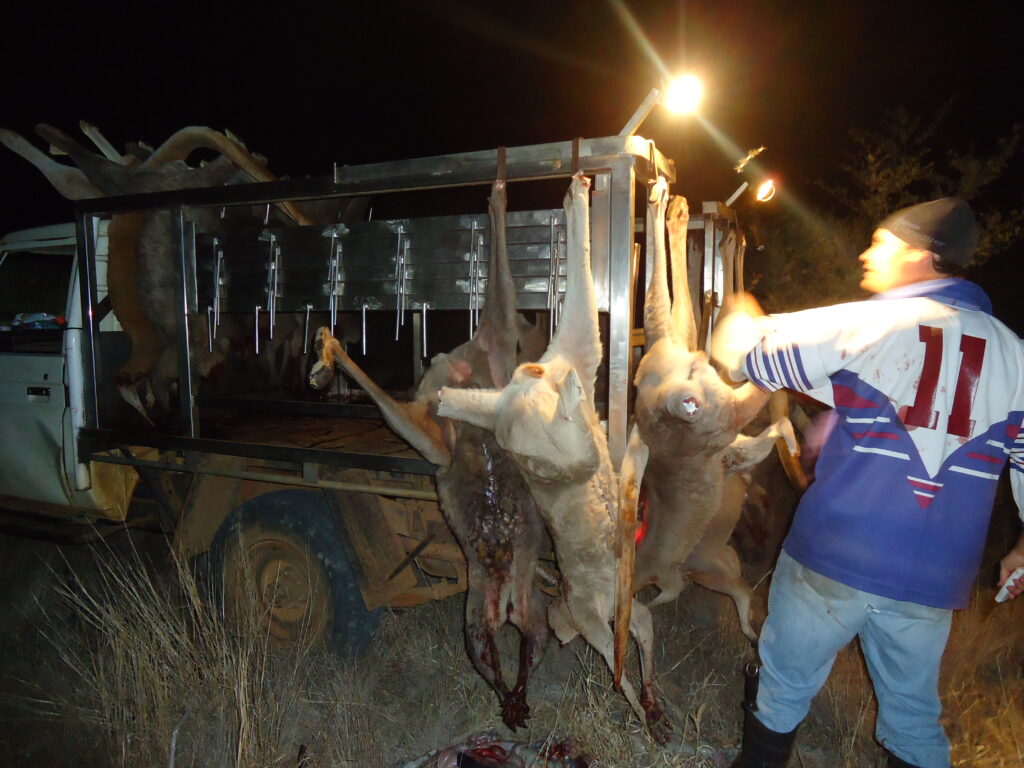Biologically Impossible Population Increases
Research indicates that kangaroo populations increase by 10% to 13.5% under good conditions. During drought, kangaroo numbers decline by up to 65%. Joey mortality is as high as 73% in good conditions and 100% during drought.
According to the South Australian Department for Environment and Water (DEW), between 2021 and 2022, red kangaroo populations allegedly increased by 20% in Gawler Ranges, 62% in Marree (Inside Dog Fence) which wasn’t surveyed in 2022, 47% in North Flinders which wasn’t surveyed in 2022, 52% in North-East Pastoral, 24% in Eastern Districts, 41% in South Flinders and 66% in Yorke Mid-North.
Between 2021 and 2022, western grey kangaroo populations allegedly increased by 33% in Kingoonya, 49% in Gawler Ranges, 21% in North Flinders which wasn’t surveyed in 2022, 316% in Eastern Districts, 29% in Murray Mallee, 60% in Yorke Mid-North, 56% in Eyre West which wasn’t surveyed in 2022, 52% in Eyre East which wasn’t surveyed in 2022, 42% in Hills and Fleurieu and 398% in the Lower South East.
In the 2023 Quota Report, DEW stated that the increase in red kangaroo numbers was likely in response to improved environmental conditions across South Australia and that the increase in SA’s western grey kangaroo population was most likely in response to the recent high rainfall conditions across most of South Australia. The Lower South East was surveyed in May 2022. DEW alleged that western grey kangaroo numbers increased by 398% and eastern grey kangaroo numbers increased by 341%. In May 2022, the Lower South East was still experiencing serious rainfall deficiencies with some areas recording the lowest rainfall on record. It was impossible for kangaroo numbers to increase in response to rainfall. The estimated increases alleged by DEW are simply impossible.
Rainfall Deficiencies During 2021 and 2022
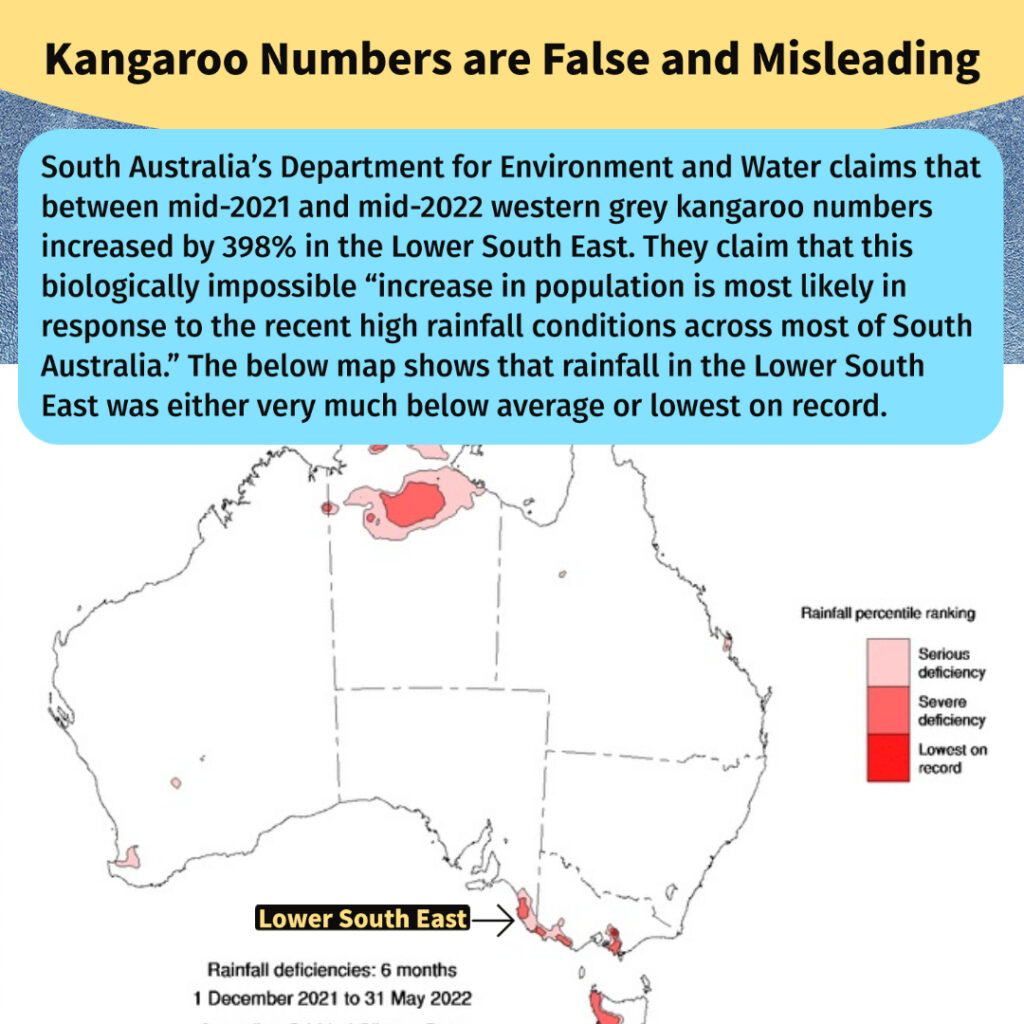
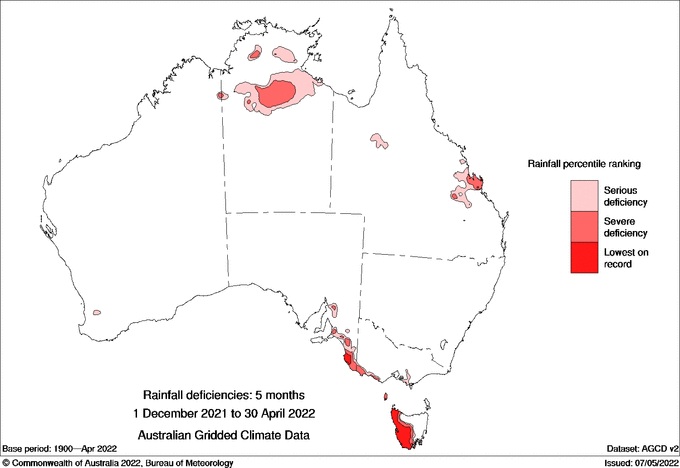
The above maps show serious rainfall deficiencies in the Lower South East, Upper South East, Murray Mallee, Hills & Fleurieu and Yorke Mid-North.
A combination of aerial and ground surveys (walking and driving) were used to survey kangaroo populations across South Australia between May and September 2022. During mid-August 2022, the survey plane flew in east-west transects 250 feet above the Southern Flinders, Murray Mallee, Mid North and Yorke Peninsula regions. A joey stays in mother’s pouch for up to 11 months. Spotting pouch joeys during aerial and ground surveys would be near impossible. For the purposes of checking rainfall since the last survey in 2021, we’ll go back to March 2022 because any joey born before March 2022 wouldn’t be visible in the pouch. The following table is a summary of South Australia’s rainfall since the last survey in 2021.
| Month | Rainfall |
| August 2021 | Below average |
| September 2021 | Very much below average |
| October 2021 | Below average |
| November 2021 | Above average |
| December 2021 | Below average |
| January 2022 | Above average (except for southeast) |
| February 2022 | Above average/Very much below average for far west and southeast |
| March 2022 | Above average in east/Below average in central areas including the Eyre Peninsula |
The following images show how rainfall deficiencies in South Australia began to improve between August 2022 and October 2022. These improvements came after South Australia’s kangaroo populations were counted, which means that “rainfall” had nothing to do with the biologically impossible increases in kangaroo numbers in South Australia.
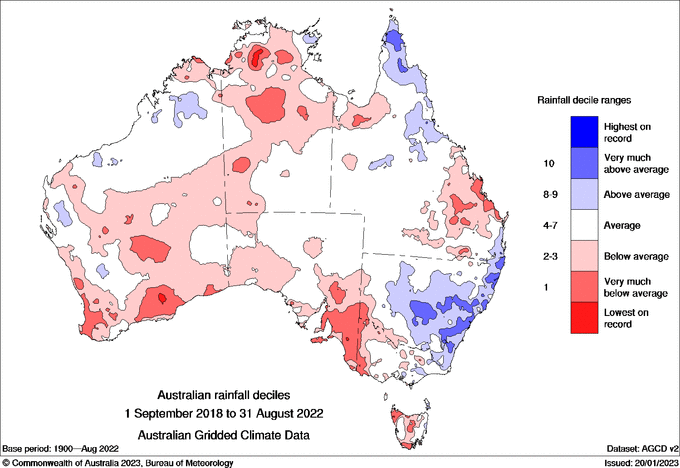
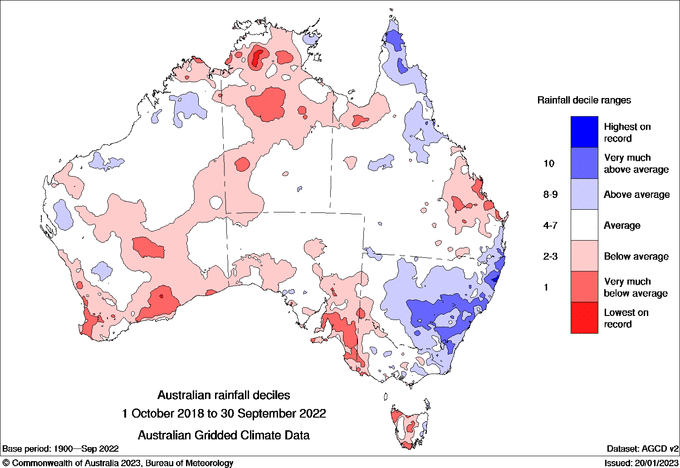
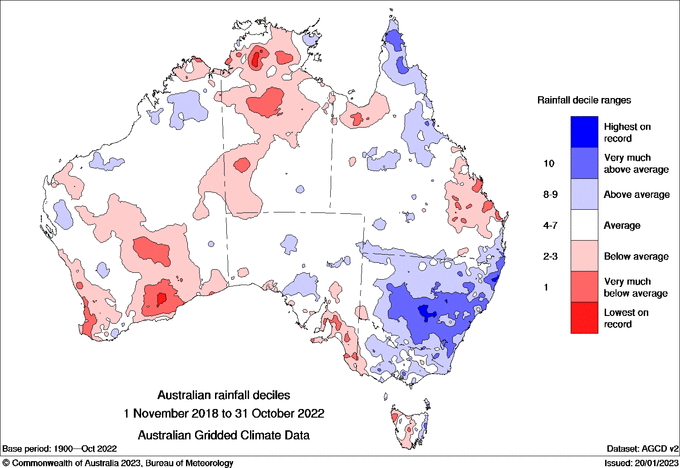
Why Did Population Estimates Increase So Much?
The 2023 Quota Report stated: “The kangaroo industry had consistently harvested the full sustainable use quota each year since the sub-region was opened for commercial harvesting on 1 January 2020. During May 2022 DEW undertook a helicopter survey of kangaroos in the Lower South East sub-region to develop a more robust survey method for the region and re-set the sustainable use quota.” Shooters killed more than 99% of the quota on eastern grey kangaroos in 2021 and around 86% in 2022. Therefore, in 2023, DEW increased the population from 20,933 to 92,317 – an increase of 341% – so that the quota could be increased from 2,500 to 15,100. Shooters killed 66% of the quota on western grey kangaroos in the Upper and Lower South East in 2021 and 40% in 2022. Therefore, in 2023, DEW increased the Lower South East population from 7,934 to 39,565 – an increase of 398% – so that the quota could be increased from 900 to 5,900. The increase in populations are biologically impossible. No doubt DEW would say that they did a “more robust survey” in 2022 which is how they managed to find so many more kangaroos previously missed in 2021, 2020 and 2019.
The 2022 Quota Report stated: “Due to the fragmented nature of native vegetation and cover (e.g. pine plantations), kangaroos are in high numbers in relatively small areas and in low numbers across a larger proportion of the harvest sub-region.” This observation has been confirmed by local wildlife carers. The problem with kangaroos in the South East is loss of habitat which has resulted in the unnatural situation of larger kangaroo numbers in smaller areas. Curiously, the situation described in the 2022 Quota Report miraculously disappeared and suddenly, amazingly, kangaroos in the Lower South East increased from 28,867 to 131,882 – an increase of 357% – despite being fragmented with high numbers in relatively small areas and low numbers across a large proportion of the harvest sub-region.
Sorry. These increases are biologically impossible. These increases are also impossible due to the fragmented nature of native vegetation and cover (e.g. pine plantations). The increases in population were solely for the purpose of increasing the quotas. Eastern grey kangaroos and western grey kangaroos in the South East are at risk of serious decline due to excessively high quotas. The 2023 quota on eastern grey kangaroos is 72% of the 2021 population estimate and the 2023 quota on western grey kangaroos is 74% of the 2021 population estimate.
Perhaps DEW wants to seriously reduce kangaroo numbers in the Lower South East due to the fragmented nature of native vegetation and cover (e.g. pine plantations), which resulted in high numbers in relatively small areas and low numbers across a larger proportion of the harvest sub-region. The problem is that such a massive slaughter of kangaroos in the Lower South East will result in these kangaroos being at risk of extinction, especially when bushfires, floods and droughts also threaten their viability. A massive slaughter now combined with a drought next year could force these kangaroos to the brink of extinction.
The mass slaughter of kangaroos in South Australia is for the sole purpose of producing profits for a commercial industry. Sustainability doesn’t enter the equation. That’s why DEW can create ridiculous impossible population increases, to increase kill quotas, and the real number of kangaroos, the real sustainability of local populations is ignored.
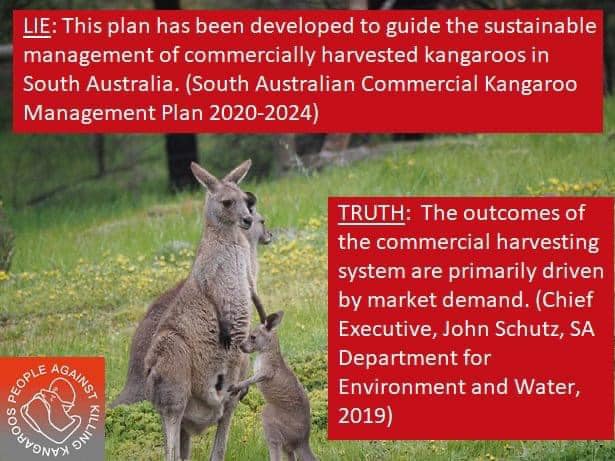
Sources:
https://www.kangarooprotection.org/pages/kangaroo-ecology
South Australia in October 2021 (bom.gov.au)
Drought archive (bom.gov.au)
http://www.bom.gov.au/climate/current/month/sa/archive/202201.summary.shtml
https://www.environment.sa.gov.au/news-hub/news/articles/2022/08/kangaroo-survey-takes-to-the-sky-over-northern-agricultural-areas
https://theleadsouthaustralia.com.au/industries/regional-showcase/kangaroo-survey-takes-flight-this-month-over-south-australia/
Climate summaries archive (bom.gov.au)

